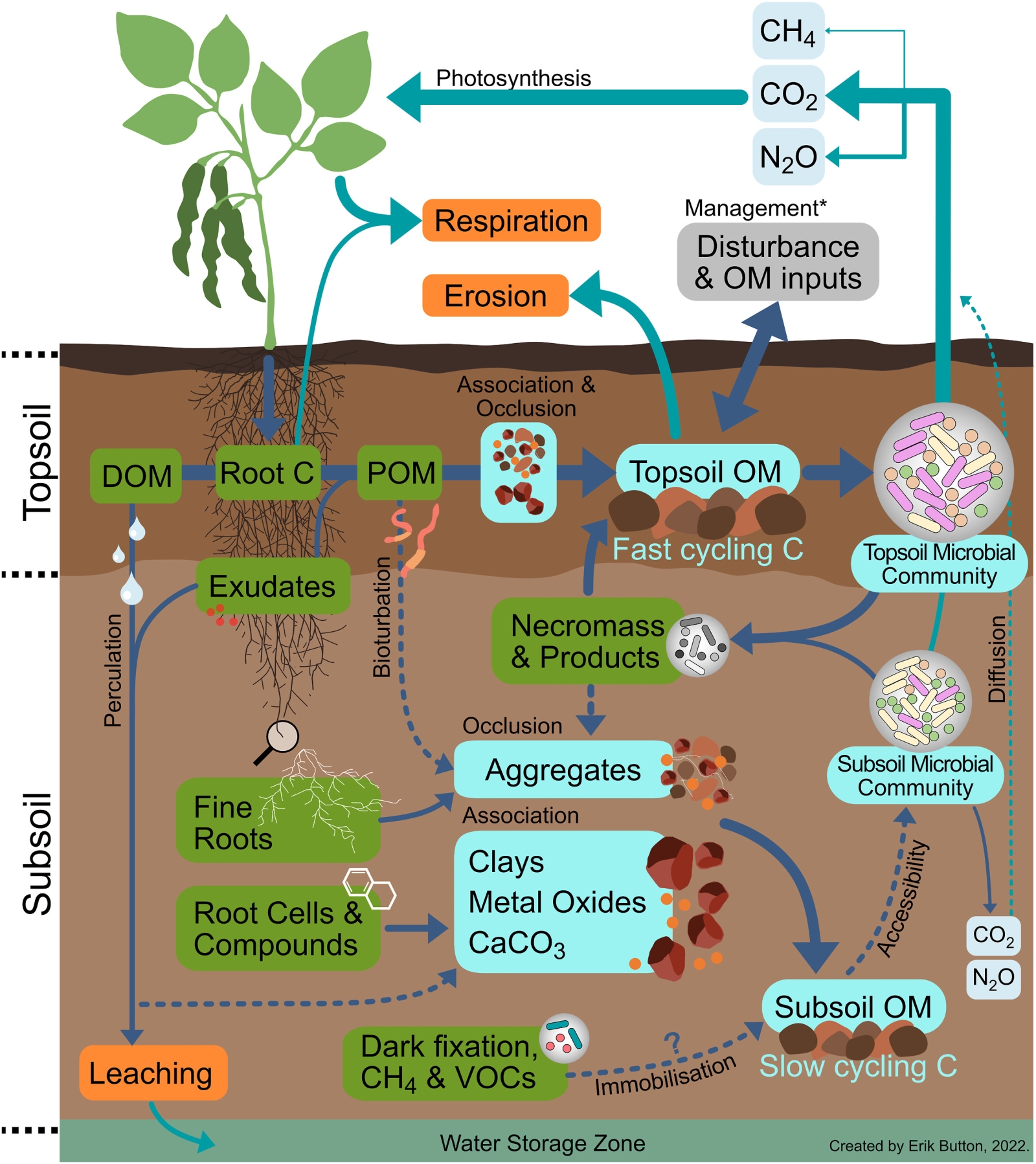July 1, 2022 | Soil Biology and Biochemistry | Source |
Introduction: Soil is a major carbon reservoir, but agricultural practices have led to significant losses of soil organic carbon (SOC), impacting soil health and increasing greenhouse gas emissions. While topsoil-focused strategies to retain SOC exist, they have limitations due to high carbon turnover. Emerging interest in subsoil carbon sequestration, which offers longer-term storage, is growing, but challenges remain in understanding and developing effective strategies for deep soil carbon management. A research team based in Bengore University in UK collaborates with international researchers from the US, Germany, Australia, and Russia in exploring potential strategies and gaps.
Key findings: Subsoils hold significant potential for long-term carbon storage, containing more carbon than topsoils, much of which is thousands of years old. However, this potential has not been fully realized, particularly in agriculture. Various strategies like deep-rooting plants, biochar burial, and deep ploughing have been proposed to enhance subsoil carbon storage, but they need further evaluation. This review identifies key factors influencing subsoil carbon cycling, evaluates current strategies, and highlights gaps in knowledge. Subsoils, although complex and variable, may be better suited for long-term carbon sequestration than topsoils, offering additional benefits like improved water retention and nutrient use in crops. The review emphasizes the need for more comprehensive studies, better mapping of subsoil carbon, and the inclusion of subsoils in carbon models and policies.

Figure | Conceptual diagram of the top- and sub-soil C cycles. demonstrating the major SOM (soil organic matter) inputs (in green boxes); the primary components determining soil OM persistence (in cyan); agricultural management (in grey box); and losses (in orange boxes and teal arrows) in an arable system. POM is particulate organic matter and DOM is dissolved organic matter. Dashed arrows represent mechanisms that depend on certain soil characteristics to occur or that they occur at very low rates.





